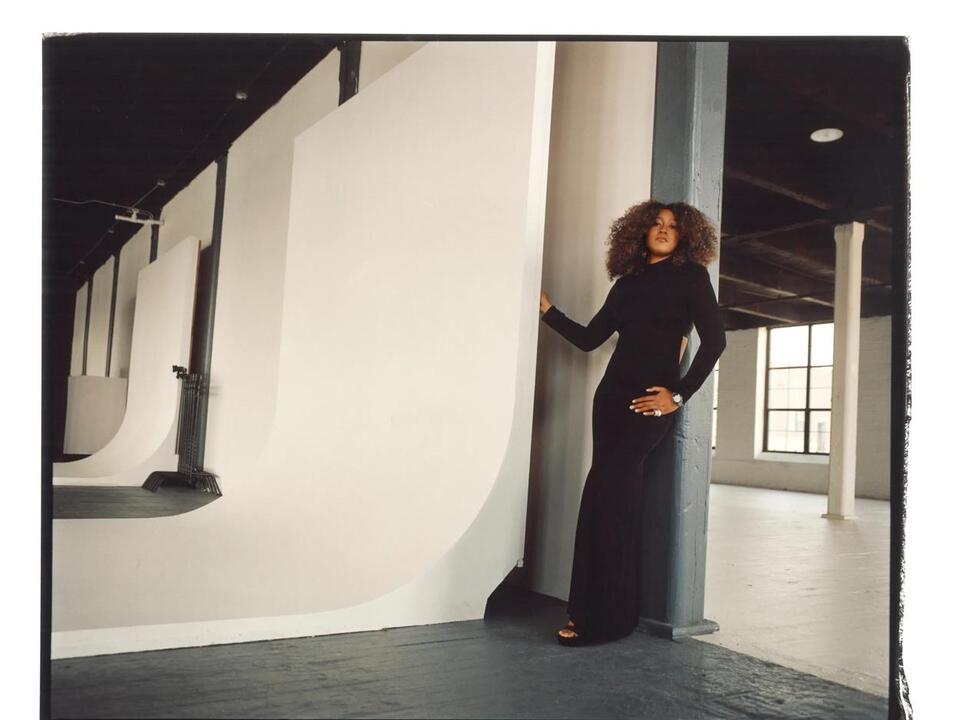Physical Address
304 North Cardinal St.
Dorchester Center, MA 02124
Physical Address
304 North Cardinal St.
Dorchester Center, MA 02124

Naomi Osaka stands on top of a New York City taxi parked askew in the middle of East 41st Street in Manhattan. It’s a sweltering July day, and Osaka is shooting a commercial for the drugstore makeup brand Maybelline. Her bright red lipstick stays put in the 88-degree heat. Her mane of spiral curls is styled in an up-down ‘do. She’s dressed head-to-toe in Nike (her apparel sponsor since 2019 with a deal paying her more than $10 million annually) and holds a Yonex racket (another sponsor). She executes a series of quick, abbreviated forehands as the photographer shouts encouragement: “Beautiful!” “Nice!”
In Bryant Park, a crowd begins to coalesce, a smattering at first, then swelling to a swarm with hundreds of smartphone-wielding onlookers clogging the sidewalk and spilling onto Fifth Avenue. Osaka continues to swing her racket. Turning her left hip slightly toward the camera, she looks out over the sea of people toward the New York Public Library. From her vantage point atop the yellow cab, she has an unobstructed view of Patience and Fortitude, the iconic marble lions that sit watch outside the library. Osaka spent part of her childhood in New York and she still finds the city liberating, even when the crowd presses in on her.
“I’ve never thought of myself as famous,” she says the next day. “When I think of famous people, I think of Beyoncé or Michael Jackson. They can’t go outside. And for me, I love being outside, especially in New York. I feel like I can walk forever.” She pauses and laughs a little. “And I feel like everyone in New York doesn’t care. Like, we’re all just living our lives. And for me, that’s one of the biggest reasons I love New York. You feel like you’re part of something and everyone is just trying their best in their own lives.”
At 26, with a baby daughter and after a 15-month break from tennis, Osaka is in a new chapter of her life. She became an overnight phenom when she beat Serena Williams in an indelible 2018 U.S. Open to become the first Japanese player to win a Grand Slam singles title. (Osaka was raised predominantly in the U.S., but represents Japan in tennis, where she was born to a Japanese mother and Haitian American father.) A string of championships followed, making her, at that time, the highest-earning female athlete with prize money and endorsements of more than $60 million.
By the time she lit the Olympic cauldron at the COVID-19-delayed Tokyo Summer Games in 2021, Osaka had achieved global stardom with more than a dozen sponsorship pacts across the U.S. and Asia (MasterCard, FTX, Beats, satellite broadcaster Wowow Inc., automaker Nissan and Japanese food giant Nissin). Unafraid to use her voice, and vulnerability, to focus the world’s attention on racial injustice, she has parlayed her social clout and prowess on the court into an entrepreneurial mini-empire that includes fashion collaborations with Louis Vuitton, Levi Strauss & Co., Tag Heuer and multiple collections with Nike, a sports management company (tennis star Nick Kyrgios is a client), a production company (investors include LeBron James’ and Maverick Carter’s SpringHill Company) and a girl-focused sports nonprofit.
But her ambitions beyond tennis are still very much intertwined with the sport that has consumed virtually her entire life. And since she returned to the tour in January (after giving birth to her daughter Shai, who turned one in July), Osaka has yet to make it past the second round of a Grand Slam tournament.
But interpreting Osaka’s comeback is, like Osaka herself, a little complicated. At the French Open, she was at match point in the second round with number-one seed Iga Swiatek, who would go on to win her third consecutive women’s singles title at Roland Garros. Less than two months later, Osaka lost badly to Emma Navarro in the second round at Wimbledon. After the loss to Swiatek, notes veteran tennis writer Ben Rothenberg, “She said, in very Naomi style, that she felt like she was playing well, but, quote, ‘The results have not been resulting.’ Meaning she’s doing everything but winning.”
Of course, success in tennis, as in most sports, is binary. Asked about her performance since she returned to tennis, Osaka’s response conjures her recent effort at emotional equilibrium. “I’ve never been good [at losing],” she admits. “But I realize now, as long as I learned from it, it’s not something I should be ashamed about. Especially since coming back, I’m trying to be a lot nicer to myself.”
Osaka has been swinging a tennis racket since she was three years old. That’s when the family moved from Osaka, Japan, to Long Island, N.Y., to live with her paternal grandparents so that her father, Leonard Francois, could begin the project of turning Naomi and her older sister Mari into the next Venus and Serena. Osaka’s childhood was marked by long car rides with her sister to matches; she would pass the time drawing or writing, filling one notebook after another. Her mother worked a succession of low-wage jobs, sometimes sleeping in her car, to support her husband’s dream of tennis stardom. When Osaka was 10 years old, the family moved to Florida, where the temperate climate made it easier to train year-round.
“It’s not something that my parents ever sat me down and told me,” Osaka says. “But I just knew. After school, we would go play tennis. When other kids were on summer vacation, we would go play tennis.”
Asked if she ever objected to her father’s mission to turn her into a tennis prodigy, she replies: “No, I didn’t know that was an option. And I think that even if I did, it wouldn’t have worked. So I just kept hitting the ball and eventually I started really liking the process and the challenge of it.”
Like many top athletes, she has developed a set of rituals as coping mechanisms, which she characterizes as “not extreme,” before reconsidering. “Maybe I just think they’re not extreme,” she laughs. “I have to put my right shoe on before my left shoe. And if I don’t, then I have to restart. And I don’t touch the lines of the tennis court, or the city logo. And my water bottles have to be completely straight.”
The mental and physical aspects of the game for Osaka are particularly intertwined. Her honesty about her psychological struggles dovetailed with a mass epidemic of anxiety and depression laid bare by a global pandemic. Today, “athlete mental health” has become a featured narrative of sports coverage.
For Osaka, the mental and physical are particularly intertwined. Her honesty about psychological struggles dovetailed with a mass epidemic of anxiety and depression laid bare by a global pandemic. Today, “athlete mental health” has become a featured narrative of sports coverage.
But several years ago, when Osaka was buckling under the glare of the spotlight, her agent put her in touch with Kobe Bryant. He thought the NBA superstar and father of three daughters could offer Osaka advice on navigating the pressures of elite competition. Bryant told her to think of herself as a lion hunting its prey. “Think of the media and the press as gnats,” he told her. “Never get distracted. You never see the lion trying to swat away the flies.” Asked if she still thinks about the lion and the gnats, she smiles. “I don’t know. I would say yes, if I feel like people’s opinions are overwhelming me. But I haven’t felt that way in a while. I’m sure there’s going to be a situation that arises where I’m going to have to remember that story again. But right now,” she says, “I’m kind of at peace.”
Whether Naomi Osaka’s business empire thrives long-term will significantly depend on her continued success on the tennis court. Winning is crucial, but how it’s defined varies. “Naomi could live pretty successfully and be economically stable for as long as she wants if she never hit another tennis ball,” her agent explains. “But if you want to build a business that can last post your own career, you probably have to play and win at the highest level for a sustained period.”
Source: Various



